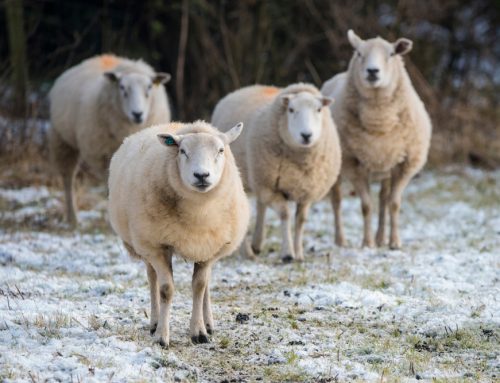By Dr. E. A. B. Oltenacu
Revised April 1999
by Dr. Tatiana Stanton
Cornell University, Ithaca, NY 14853
The feeds that are fed to goats can be broken up into two different groups. Basically, these two groups are roughages and concentrates.
Roughages are high in fiber (18% crude fiber or more). Fiber adds bulk to the goat’s diet and keeps his digestive tract working well. Fiber has a laxative effect. It can also influence the butterfat content of a mother goat’s milk. Diets that are high in fiber tend to increase butterfat content resulting in creamy milk, while low fiber diets decrease butterfat content. Most roughages are forages, that is, they come from the green vegetative parts of the plant, for example, blades of grass. Forages tend to be low in energy.
In contrast, concentrates are low in fiber and high in either energy or protein. They often come from the seeds of a plant. Examples of concentrates include corn, oats, brewers grains and soybeans.
Feed groups
- Dry forages – these feeds are cut and cured, usually in the sun. This way they can be stored for later use. Hay is forage that is cut before or at maturity. It is either cut before it has formed seeds or while the seeds are still on it. Straw is forage that is cut after it is past maturity and the seeds have already dropped or been harvested from it.
- Green forage and browse – examples of these are pastures or shrubs that your goat grazes fresh. As well as grazing, goats can browse like deer and giraffes. They can take a woody plant like a raspberry bush and use their mobile upper lip to select the tender, highly digestible new leaves from it and leave behind the less digestible branches and thorns. Because of this ability to select and reject different parts of the plant, goats are called selective eaters. Sheep and cows do not have mobile upper lips and thus, have less ability to pick and choose the parts of a plant they want to eat. Goats can get sick if they get too much green forage too suddenly. Always introduce your goat to fresh pasture and cuttings gradually. Do not feed her yew clippings, rhododendron clippings or prunings from cherry, apricot or peach trees (these fruit tree leaves are toxic when they wilt). All of these plants are very deadly to her but she will eagerly eat them. Before you cut and carry any fresh feed to her make sure it is not poisonous.
- Silages – these forages have been cut and then “pickled” rather than dried to store them. They are cut and then stored without air. In the absence of oxygen, certain bacteria are able to ferment the forage and preserve it this way. Silage can be made from grasses and legumes and also from corn plants. Goats that have not grown up on silage take a little while to develop a taste for it. If improperly fermented or stored, the silage can develop molds that are deadly to goats.
- Energy concentrates – as the name suggests, these feeds are high in energy. They include feeds that have less than 20% protein and less than 18% crude fiber. Energy concentrates include grains, flour mill by-products and certain root crops.
- Protein concentrates – these concentrates contain at least 20% crude protein. They are often also high in energy. They can be of plant or animal origin. Examples include soybean meal, buckwheat midlings, dried whey, cottonseed meal and soybean meal.
- Mineral supplements – come in various chemical forms depending on what mineral is being added to the diet. A mineral supplement that many of us humans use is table salt. Minerals should be added carefully to the feed as excesses can be toxic (poisonous) to your goat. A balanced goat loose mineral should be fed to your goat free choice. A salt block should be available especially to bucks to encourage water drinking.
- Urea – is a source of nitrogen just as proteins are. However, it is not a dietary protein and can be highly toxic if used to substitute for too much protein. Always introduce goats to it gradually. It should not make up more than 1% of the complete ration or 3% of a concentrate fed separately. Commercial dairy concentrates that contain 1 to 2% urea are safe for goats.






Leave A Comment